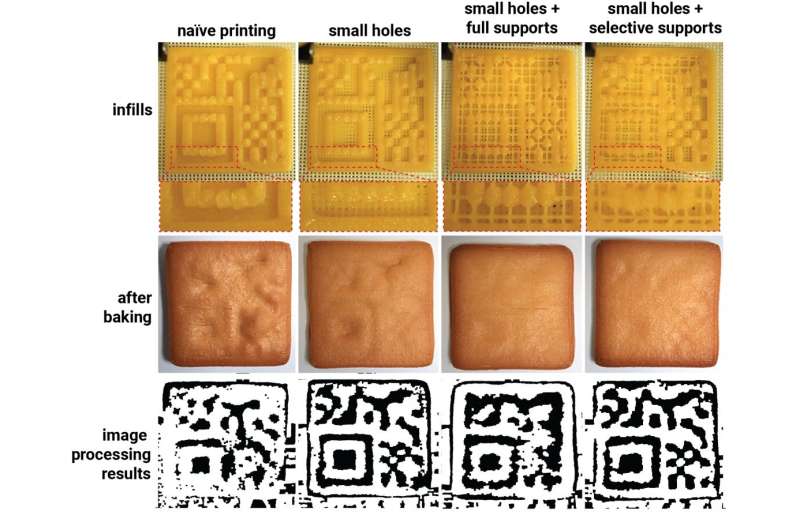Researchers at Osaka University, Japan, are hard at work developing QR tags that are informative as well as… tasty.

Unknown to most of us laymen, there is quite a lot of interest in developing edible tags for our food. These could perform the same role as today’s food labels but would also form a tasty snack after use — which would also do away with the information contained on the label.
Now, Japanese researchers have developed an approach to produce one such kind of unobtrusive, edible tag, which can be safely embedded inside edible products. So far, the team has been experimenting with tags that are baked into cookies. Known as “interiQR”, such tags can be read using a device without altering the food or its packaging and don’t have any impact on the taste of the product.
Cookie dough tags
“Many foods can now be produced using 3D printers,” explains Yamato Miyatake, lead author of the study. “We realized that the insides of edible objects such as cookies could be printed to contain patterns of empty spaces so that, when you shine a light from behind the cookie, a QR code becomes visible and can be read using a cellphone.”
The food industry has a long and rich history with tags. These range from the extremely basic, such as stickers on pieces of fruit, to more advanced options such as labels containing radio frequency identification (RFID) tags which allow for the automatic identification and tracking of products. One enormous drawback of our labels as they are today is that, cumulatively, they lead to mounds and mounds of extra material used for packaging — which translates to increased waste and pollution.
Using a QR cookie as a tag would help cut down on packaging waste while not altering the items in any way (something that fruit stickers are very good at doing). The information is contained in 3D-printed “infills”, around which the cookies are baked. Such a ‘label’ would also allow producers, retailers, or customers to read the information using a QR code reader and a backlight at any point in a product’s life.
“Our 3D printing method is a great example of the digital transformation of foods, which we hope will improve food traceability and safety,” says senior author of the study, Kosuke Sato. “This technology can also be used to provide novel food experiences through augmented reality, which is an exciting new field in the food industry.”
The team is confident that their cookie tags could prove to be a great help in reducing packaging waste worldwide once they’re adopted on a wide scale. Needless to say, suddenly having a cookie available to munch on with every purchase is incentive enough to adopt the use of these interiQR cookies.
The research will be presented at the 35th Annual ACM Symposium on User Interface Software and Technology.









